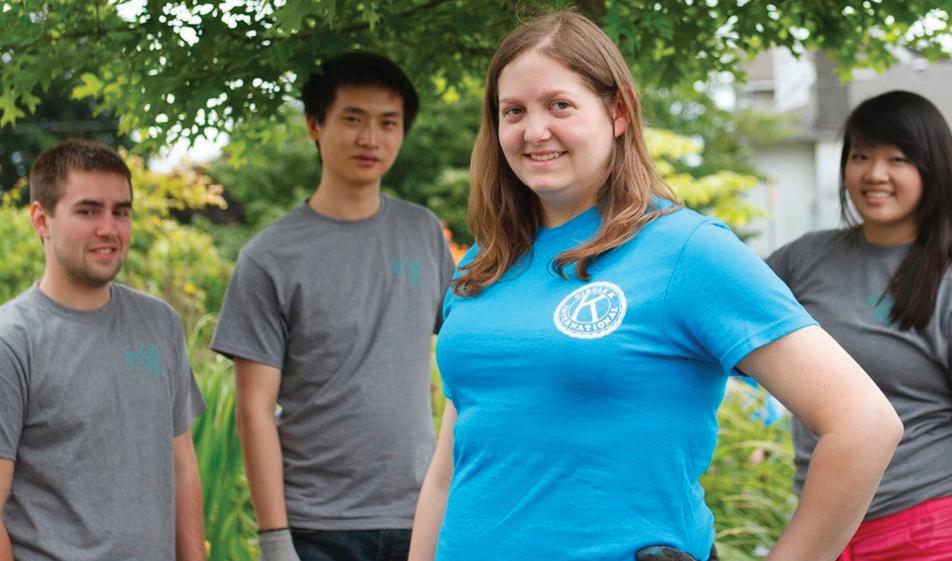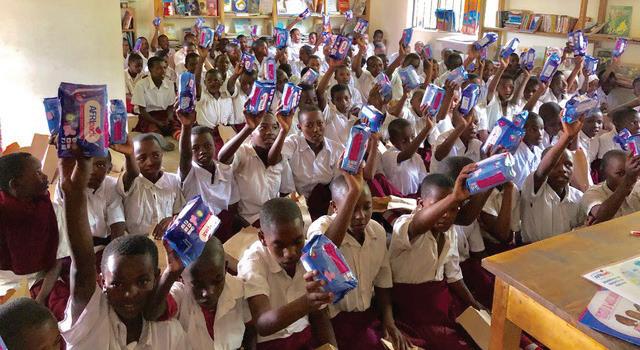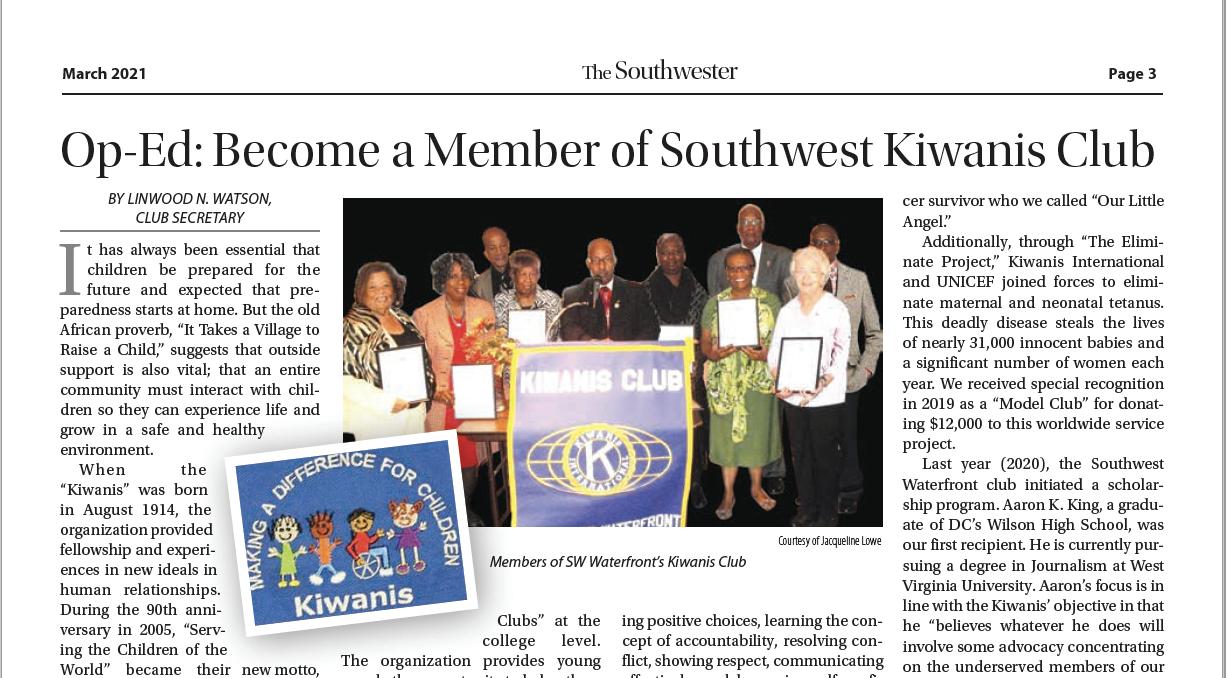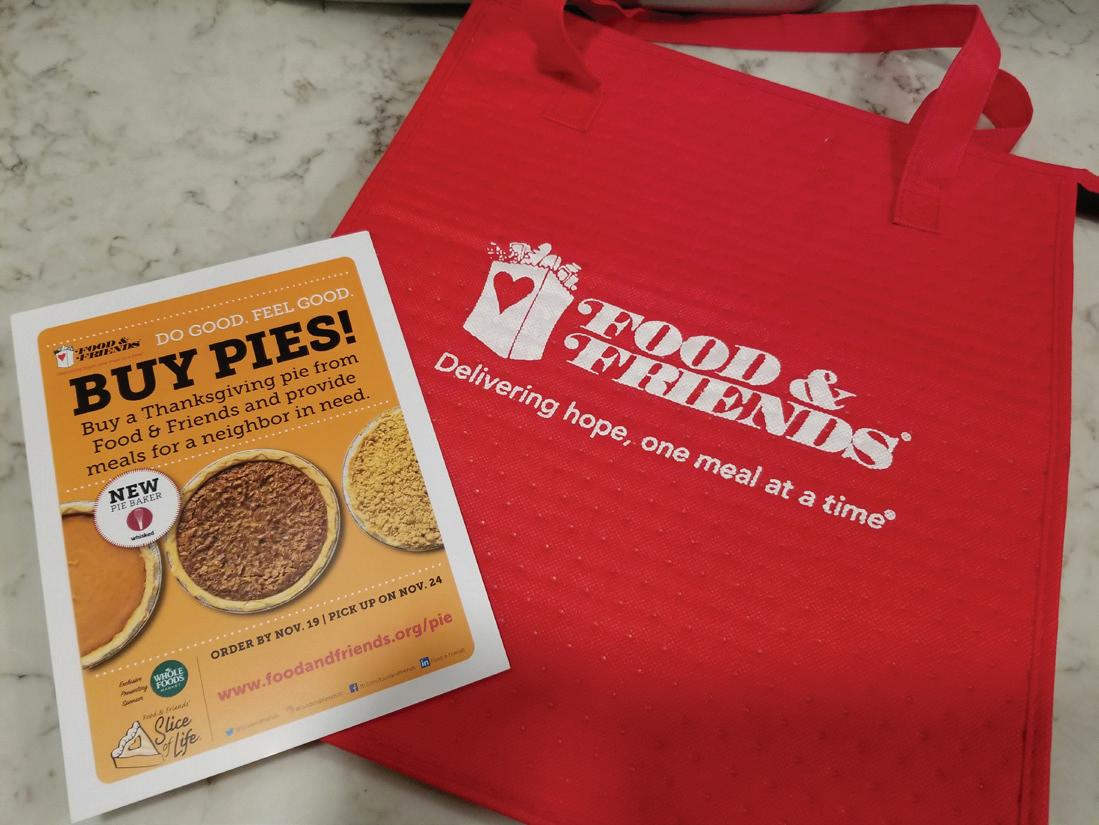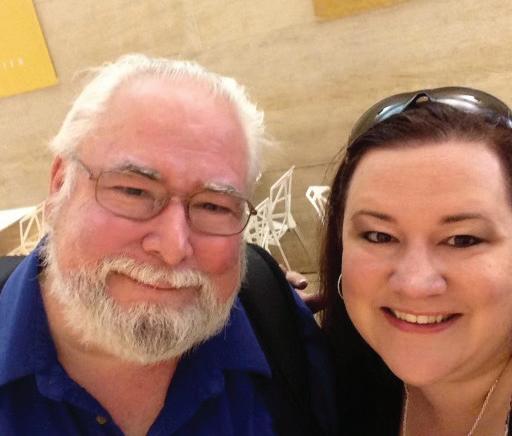
5 minute read
DOLLARS & SENSE
Look for fundraising inspiration in this new featured column! Do you have a successful fundraiser that you would like to share? Contact editor@capitaldistrictkiwanis.org.
BLUEBERRIES: A POPULAR FUNDRAISER FOR ARLINGTON KIWANIS
What do you think when you hear or see the word BLUEBERRIES? 1. Healthy 2. Nutritious 3. Delicious 4. Kiwanis Club of Arlington, Virginia 5. All of the above
Well, all of the above, of course. And blueberry season 2021 is about to start. Always picked at the height of their freshness, the berries are expected to arrive in Arlington the last weekend in June, directly from the grower. Capital District Kiwanians are invited to place orders and participate in the bounty.
The Kiwanis Club of Arlington began selling blueberries as a fundraiser eight years ago. That first year just 250 10-pound boxes were sold, mostly to Kiwanians and friends of Kiwanians. But word got out and each year the club has increased its sales. Hesitant about their ability to use 10 pounds of blueberries, customers will often start by splitting a box with a friend. The next year, they buy a box, and before long, they are purchasing multiple boxes, freezing some for use throughout the year. The high-quality blueberries are addictive.
In 2020, the club had to adjust procedures in order to comply with CDC pandemic guidelines. Masks were worn by all and social distancing was observed. Customers were asked to order and pay online and 90% of sales were prepaid. Delivery was contact-free with Kiwanians loading berries directly into the purchasers’ cars. The club discovered that, unlike other in-person fundraisers, blueberry sales could be adapted to the realities of COVID-19 restrictions, and customers were especially grateful to be able to do something “normal,” since so many other activities had to be cancelled.
“The Club sold 1100 boxes and we could have sold more,” commented Julie Wright who has led the Club’s blueberry fundraiser since its inception. “Just imagine. That’s five and a half tons of blueberries!”
The club has also partnered with the Arlington Food Assistance Center (AFAC), which loans a forklift and driver to transfer pallets of berries from the delivery truck to the Arlington storage location. That location used to be a warehouse but in recent years, the Kiwanians have operated from the parking lot of Cherrydale Methodist Church, 3701 Lorcum Lane, Arlington, where there is greater visibility. That required renting a refrigerated truck for berry storage. “This year we will need two trucks,” Wright adds.
In addition to their own orders, customers are also given the option of ordering blueberries for AFAC. In 2020, more than 600 pounds were donated to AFAC for distribution to Arlington’s neediest families. In addition to AFAC, organizations that benefit from Kiwanis blueberry sales include Arlington THRIVE, Crisis Link, Girls on the Run, Arlington 4-H, YMCA, Make-a-Wish, ASPIRE After-School Learning, VHC Pediatrics, National Capital Treatment & Recovery, and many others.
Wouldn’t you like to have some of the plumpest, juiciest, most delicious blueberries you can get? A 10-pound box is just $35. Purchasing information is available on the Kiwanis Club of Arlington website www.arlingtonvakiwanis. com and questions may be sent to blueberriesinarlington@gmail.com.
WATCH THE VIDEO:
FOUR STEPS FOR CREATING A VIRTUAL FUNDRAISER
BY STEVEN HADT, KIWANIS INTERNATIONAL
The need for social distancing continues to impact fundraising plans for Kiwanis clubs around the world. But the needs of the community remain. Without the funds raised by those events, many community needs will remain unmet.
However, nearly all in-person fundraising events can be done online, says Anna Wu, a member of the Kiwanis Club of Hacienda Heights. Wu has chaired virtual fundraisers for several Kiwanis clubs since social distancing orders went into effect.
“Whether we’re at home, apart or together, we’re always making a difference. That’s what Kiwanis is doing every single day,” Wu said.
On the August 12 Lunch with a Leader Kiwanis video series, Wu detailed the four-step process she uses to help guide her planning for virtual events.
Step 1: Decide the details of the event.
Pick the date, time and kind of event you want to have. Some options that have worked well for other Kiwanis clubs include wine tastings, painting nights, cooking class, walk-a-tons and virtual auctions.
Step 2: Create a way for people to sign up.
A simple Google Form may be all you need to collect the attendees’ contact information. Other options include Eventbrite or Facebook Events.
Step 3: Publicize your event.
Let people know how they can participate and pay the registration cost.
For one event, Wu teamed up with a local wine shop where participants could pick up the supplies needed for “Wine Night.” During the 60-minute virtual event, a wine expert from the shop went through the descriptions of the four half-bottles of wine, noting the flavors and profiles of each of the samples — just as the expert would have done if the participants were together in a room.
“It can be a little logistic-heavy in the beginning,” Wu said, “but once you have everything figured out, it just all falls into place.”
Step 4: Send the link to participate.
Once the person pays, send them the link they need to participate virtually and instruct them how to pick up the supplies.
Wu says she’s talked to clubs that have made more money with virtual events than in-person fundraisers. There are fewer expenses such as facility rental or food. “There’s no chance of losing money because you’re only buying supplies for the people who have signed up,” she said.
Since people are getting accustomed to interacting with each other on Zoom, Wu finds there hasn’t been a problem getting people to participate in a virtual fundraiser — especially when she connects the event with its purpose.
“You want to make sure people know why they’re spending this money — to help kids achieve another level of literacy, help them stay safe or prevent injuries,” she said. “The purpose is just as important as the event.”
Wu’s last piece of advice is to have fun and create events that interest the club and community.
“While we are apart, it’s important for us to be together in the same environment, doing the same thing,” she said. “During our virtual fundraisers, we’ve been fortunate enough to recruit two new members because they enjoyed our interaction and they wanted to make a difference in the community.”




